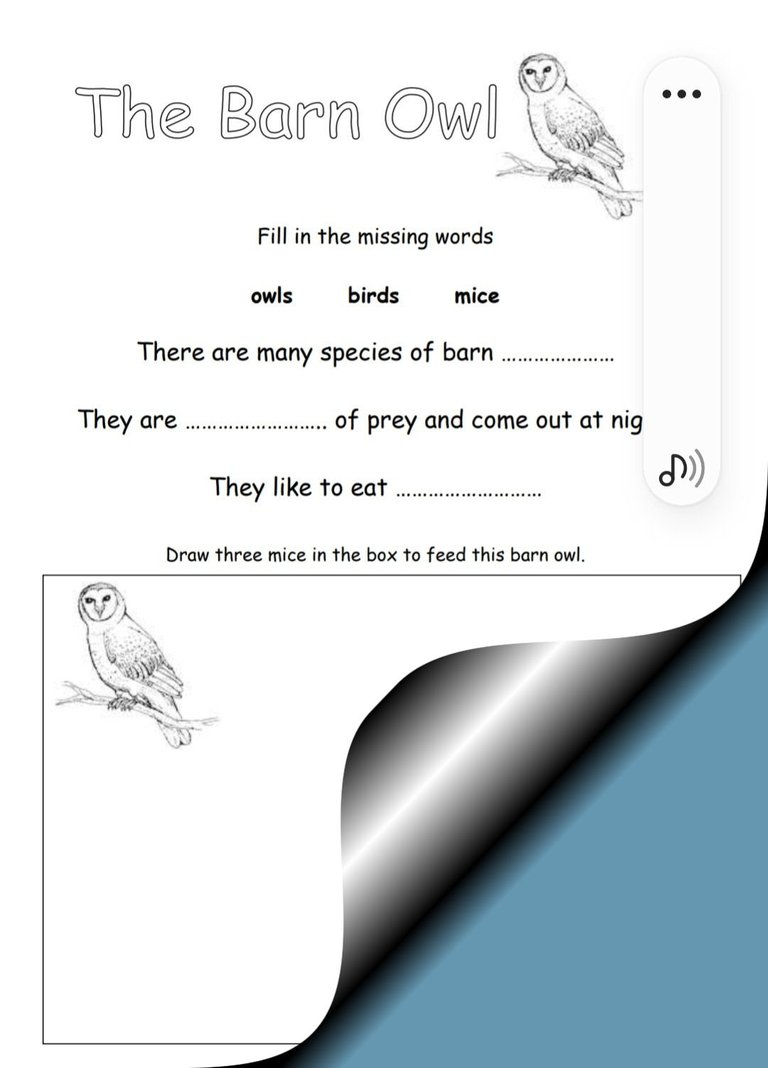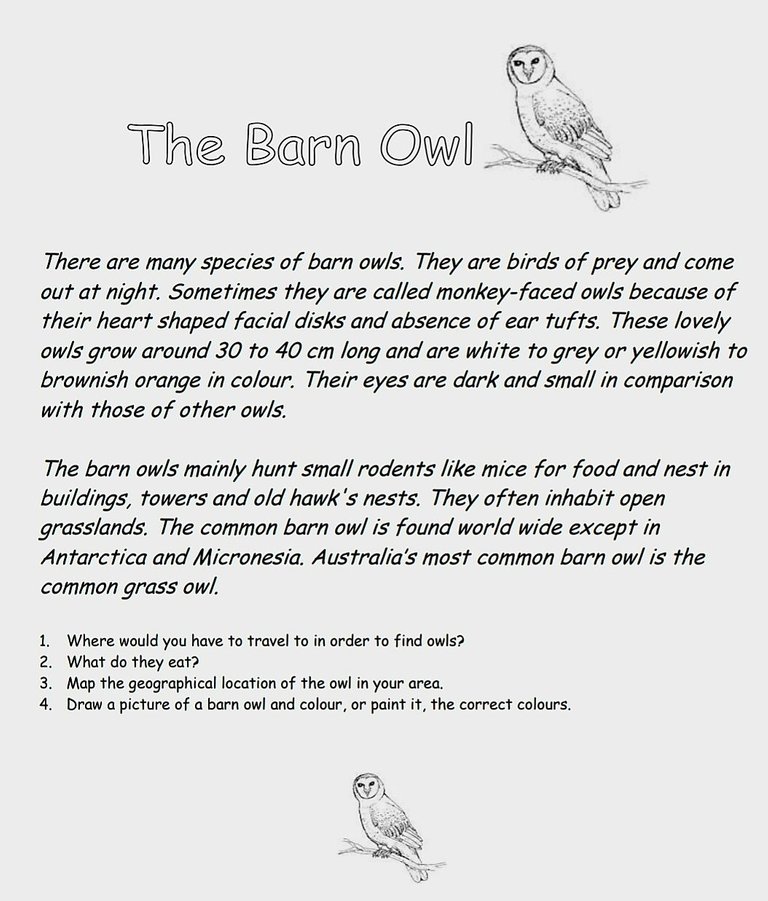What is Theme Based Learning?
Themes are usually teacher led and the children follow each step given to them. The theme based approach or curriculum delves into real-life learning and encourages students to research and develop their academic skills.

(A simple example for very young children above)
In this post I will give you an example of an owl theme. All my children thought themes were boring to some extent. Themes are dragged out over weeks or months and most children get so bored with them that learning becomes lifeless, mind-numbing nonsense and you've lost their enthusiasm they started so eagerly with.
If you feel compelled to follow a theme make sure it runs for no more than a few weeks at the most. Try a theme, maybe once or twice a year. You can incorporate all eight major learning areas in the one topic covering
English, mathematics, science, geography, art, health, technology, society and environment.
Theme Example
By linking these learning areas you can make a start with your children. Take for example the subject of owls.

The above example is for younger children and incorporates English reading, writing, spelling, grammar.
Students can be asked to find out what type of owls live in their local area.
- Do any owls live here?
- Where would students have to travel in order to find owls?
- What do they eat?
- How do they breed?
- Colour, shape, size, height, weight, origin, food source.
- Environmental issues.
- Industrial impact.
- Geographical locations.
Many more questions could be asked and answered. Is it possible to take:
- photos
- draw pictures
- research books from libraries
- explore encyclopaedias
- delve into the Internet
- locate owl newspaper articles
- organize a night expedition
- visit a zoo
and the list goes on.
Save Money
By looking into these issues, your children have covered; English, mathematics, science, geography, society and environment, art, health and technology.
You might say: "This will take weeks!" Not so, you will be amazed how quickly this information can be sourced and documented. You can go one step further and use open-ended learning and check out if your owls are:
- A migrating bird.
- If they are, how far do they travel, which towns, cities or countries do they travel across.
- Use road maps, atlases, note the distances, how long it takes for the birds to migrate, the seasons and so forth.
- Draw a map of the migrating route.
The example below is for older children but still primary school years.

Even though we are looking at owls in particular, you can cover or involve any other topic. If students were to personally follow migrating birds...
- What forms of transportation would be needed?
- What countries would they cover?
- What languages are spoken?
- The type of currency needed to buy provisions for themselves.
- Mapping the route they would take and the open-ended learning continues.
I hope you are getting an idea of what I mean with themes and utilising open-ended learning within them. This style of teaching is successfully used by thousands of people across the world.
Home based educators use it effectively and successfully on a regular basis. Some innovative teachers in public and private schools use it economically and have proven it is an efficient way to teach students.
Thousands of dollars can be saved by utilizing the open ended learning method and themes, and avoiding, to a certain degree, set textbooks, workbooks and pre-set curricula. Yes, we need structured learning and standard workbooks.
However, if you can mix these with the open-ended learning method, you will acquire students who enjoy learning, are enthusiastic, eager to discover more, are ready to overcome a few hurdles and obstacles, willing to participate, become more observant, develop better interpersonal skills and will become responsible active citizens.
Printable Resource Available Here
Images and Written Work is my Own
©️ingridontheroad
Congratulations @ingridontheroad! You have completed the following achievement on the Hive blockchain and have been rewarded with new badge(s):
Your next target is to reach 60 posts.
Your next target is to reach 4500 upvotes.
You can view your badges on your board and compare yourself to others in the Ranking
If you no longer want to receive notifications, reply to this comment with the word
STOPTo support your work, I also upvoted your post!
Check out the last post from @hivebuzz: